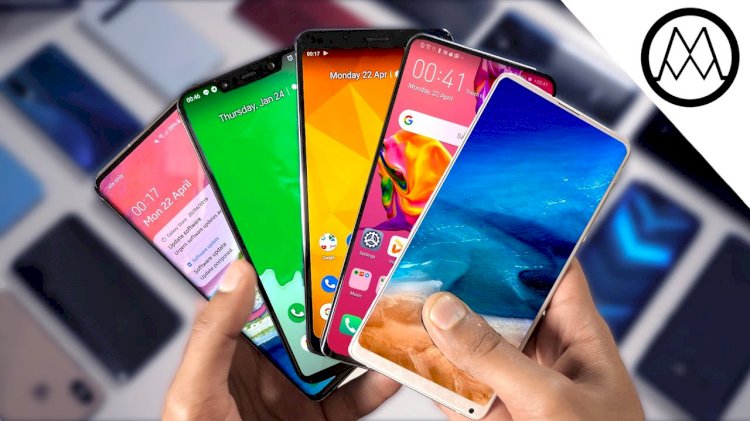Smartphones are harming children.
Research suggesting that rates of anxiety and depression are on the rise in children and teens link these conditions with lower sleep quality and self-esteem, in turn associated with increased access to smartphones and social media

Smartphones are harming children. But parents can’t just be Luddites
Recently my six-year-old daughter came home from school upset that some classmates had told her she was “boring”. Their reason was that she doesn’t have an Xbox. It was one of those moments – like the time she listed the kids in her class who had their own iPads, and asked if she could have one for her birthday – when I had to take a deep breath and wonder how we were going to make it through to her teen years without introducing these gadgets into her life.
The Office for National Statistics reported that 96 per cent of UK households have internet access as of January and February 2020, and a 2014 study claimed that 70 per cent of primary and secondary schools used tablets as a teaching aid in the classroom (a number which has likely increased significantly over the last six years). During the pandemic, of course, teachers and parents alike have relied more heavily than ever before on technology to meet their children’s educational needs, and “digital poverty” has become a pressing concern amongst people caring for children who don’t have access to the internet and laptops or tablets at home.
So, is my reluctance to give my six-year-old an Xbox, iPad, or smartphone old-fashioned and over-protective? The evidence suggests not. The benefits of technology on child development and the mental health and wellbeing of our young are unclear, while the negatives are becoming more and more obvious.
A new Netflix documentary called The Social Dilemma has brought to light the disturbing ways our world is being shaped by algorithms designed to “use your psychology against you”. But even before this, there was plenty to give parents cause for alarm – not least the fact that many creators of these devices wouldn’t give their own children the very technology they invented or helped to promote. Steve Jobs, the founder of Apple, famously said that he limited how much technology his kids used at home, an approach that Microsoft co-founder Bill Gates also seems to have taken with his family.
Research suggesting that rates of anxiety and depression are on the rise in children and teens link these conditions with lower sleep quality and self-esteem, in turn associated with increased access to smartphones and social media. One study from The Journal of Social and Clinical Psychology, for example, found that limiting the amount of time spent on social media can improve rates of loneliness and low self-esteem, while research cited by The National Sleep Foundation connects excessive use of electronics throughout the day with an increase in insomnia in teens. The mere presence of a phone can be harmful to our relationships, making us feel less understood during a conversation, a study by Andrew K. Przybylski and Netta Weinstein found.
Perhaps most disturbing of all is the data on childhood pornography exposure and consumption: research from Bitdefender in 2016 found that one in 10 visitors to the biggest porn websites are under 10 years old. This seems undeniably linked to soaring smartphone usage among children and young teens; last year, Common Sense Media found that 69 per cent of kids in the US have their own smartphone by the age of 12.
As a working mother, I’ve benefited from the flexibility that my laptop, smartphone and internet access have afforded me. Skype has enabled us to maintain close contact with loved ones on the other side of the Atlantic, and we share photos and videos of our children via WhatsApp. I cannot deny the benefits of technology, but I do believe we need to use it wisely. Parents need to step in to protect their children from the potential harms of technology, before they’re ready to moderate their use of it themselves.
The debate around the impact of technology on children has one side claiming that naysayers are luddites standing in the way of progress, and the other side focusing on the dark side of technology. The question for concerned parents like me is, can we harness the benefits of technology without putting our children in danger? And how can we limit our children’s use of it in a world that revolves around internet access and the latest “must-have” devices and social media platforms?
Experts say that we need to be intentional about the role technology plays in our lives, homes and classrooms. A lot depends on what age we’re introducing the technology to children, the context in which it’s being used, and the amount of time we’re allowing them to use it for.
Nir Eyal, author of Hooked and Indistractable, points out that the proliferation of technology presents an opportunity for parents to teach their children to deal with distraction in a healthy way. “It becomes more important for us to develop this new skillset to make sure that we can get the best out of these technologies without letting them get the best of us,” he told the Hashtag Authentic podcast.
He also pointed out that we have to model the behaviour and self-control with technology ourselves. “The best thing you can do is to become indistractable yourself, to set a good example. We can’t tell our children ‘Stop playing Fortnite!’ when we’re checking Facebook; it doesn’t work that way.” Communication and honesty is key: “One of best tips I can give parents is to be a little vulnerable here, to tell your children ‘Look, I also struggle with distraction … This is a challenge we can [face] together.’”
Well before the development of the first home computer, the American TV host and Presbyterian minister Fred Rogers was a passionate advocate for the careful curation of TV and technology for the good of children. In his 1969 speech to the US Senate, Rogers talked about the negative impact that the thoughtless “bombardment” in much children’s TV had on children, and how important it was to teach children values like love, forgiveness and self-worth in the programmes that they watched.
I’ve also experienced the joy of a good film or TV show, and have witnessed how certain types of media can engage my children for the good. Watching an episode of Mister Rogers’ Neighborhood, for instance, leaves them feeling inspired, ready to dive into imaginative play, or pick up a book or crayons. My husband and I refer to these kinds of films and TV shows as “slow media”, because they don’t tend to overwhelm the child’s senses and leave them feeling irritable, and whining for more the way many shows (particularly modern ones) do.
Growing up, watching television was a fun part of my family’s life, a communal activity we’d enjoy together in moderation. My parents were firm believers in the principle that what you consume matters, even more so when the malleable heart and mind of a child is involved, so they would choose what we watched with care, pre-recording shows that had a wholesome and inspiring ethos so we could watch them without being exposed to anything potentially harmful while channel-hopping. Our TV watching was never to the detriment of reading, either, and often helped us to develop our love of books; it was the BBC’s 1995 adaptation of Pride and Prejudice that I saw when I was eight, for example, that sparked my lifelong love of 19th-century fiction, and I went on to study English literature at university years later.
As long as we’re aware of the dangers of technology and implement sensible boundaries around children’s exposure to – and use of – electronics and social media, we can help prevent it from becoming a problem. One option is smartphone alternatives like Gabb Wireless and The Light Phone, which have phone and messaging features but not social media or the internet. Other rules of thumb include agreeing on time limits for technology you allow in your home; not taking tech with you to bed; and instilling simple etiquette rules about not having your phone out while you’re in company with someone.
As our young daughter matures and develops her self-control and self-awareness, we’ll gently introduce more technology into her life. Until then, I’m happy to let her make “laptops” out of paper, and pretend-play that she’s making a film with her cuddly toys.
- November 1, 2020 – by Sophie Caldecott - freelance writer. See sophiecaldecott.com


















